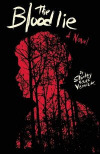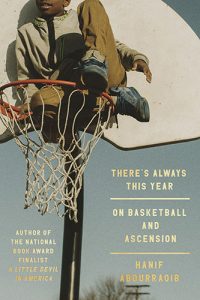The Blood Lie
The Blood Lie is labeled as a Young Adult/Jewish Studies book, but I think the main intention of the writer was to present it as Jewish Studies. The characters, plot, and narration did not seem aimed at appealing to the young adult reader, but at telling a story of Jewish history. A young girl, Daisy, gets lost in the woods and the Jewish people of the town are accused of kidnapping her for a blood sacrifice for Yom Kippur. These people are soon ostracized and forced to band together.
The Blood Lie is labeled as a Young Adult/Jewish Studies book, but I think the main intention of the writer was to present it as Jewish Studies. The characters, plot, and narration did not seem aimed at appealing to the young adult reader, but at telling a story of Jewish history. A young girl, Daisy, gets lost in the woods and the Jewish people of the town are accused of kidnapping her for a blood sacrifice for Yom Kippur. These people are soon ostracized and forced to band together.
Jack’s love interest in Daisy’s older sister Emaline is compelling, as is the religious conflict between them. Nowadays, religion and background do not need to match in order for a relationship or marriage to be socially acceptable; however, in the late 1920s, Jack’s concerns are realistic and intriguing to read about. Many things remind Jack of the tall wall of religion between them: “Jack tried to think of something else to say, but Emaline’s pendant commandeered his attention. The crucifix. It’s what stood between Emaline and him, like an electrified fence, all glittery and metallic and masquerading as jewelry.”
The American dream is also a common theme throughout the novel, which strikes a chord with the reader, as many of us are fortunate to already be living in the States. Sometimes it is easy to take that luxury for granted, and so it is always nice to be reminded of the struggle people go through to live here. The Blood Lie challenges this dream by exploring the reality that some people, who moved their entire lives to America in order to be free, were often barely able to get by in the 1920s. Jack sees Massena, New York as a trap. Generations continue working hands-on jobs, whereas Jack wants to be a musician and break free of his predetermined future.
Two conflicts fought with each other throughout the entire book. The story was either about the tension between the townspeople and the Jews as a result of the Daisy “kidnapping” or about Jack’s future and preparation for his interview/musical audition. However, there was nothing cohesive about the two ideas; they just alternated rather than meshing together to create a believable and credible story. The fact that the book begins by introducing Saturday, September 22, 1928 as Jack’s birthday was an interesting choice. The birthday did not seem to have an impact on the storyline and could have been left out, producing an almost identical story.
By the end of the story, Emaline has suggested that Jack take Sarah (a nice Jewish girl from their town) to the fall festival dance. The dance was not an important part of the story, and Emaline’s suggestion came out of nowhere. She said that she would really like to go with Jack, but knew it could never happen. Although the characters are clear in their feelings and intentions through dialogue and narration, I didn’t really believe them. I didn’t get too invested in the characters, with the exception of Jack’s future as it was so important for him to get out of Massena; however, we never learn how the interview/audition goes and whether he goes to the new school. The themes of alienation and religious conflict work well in the book, but I found myself unable to fully enjoy it.




